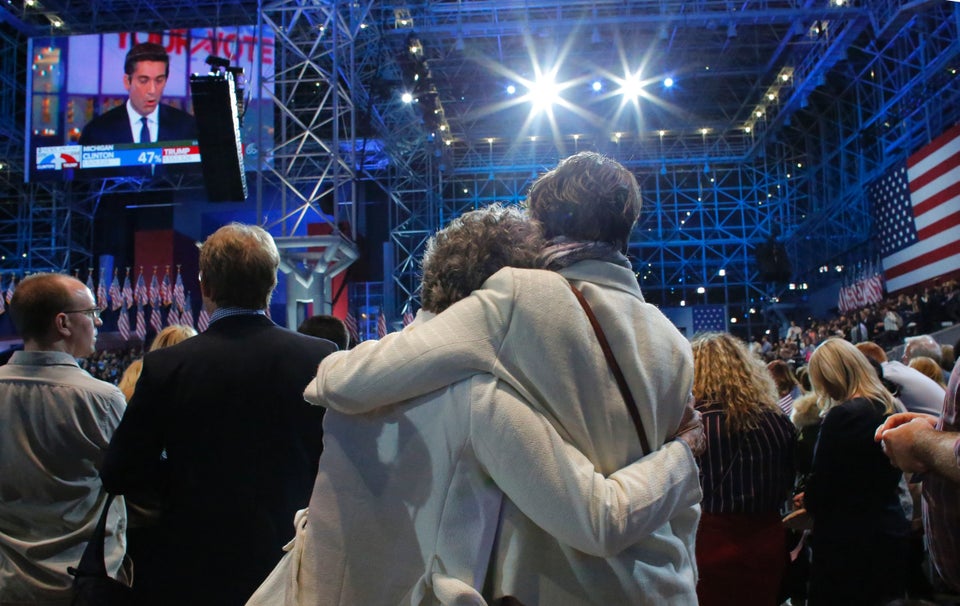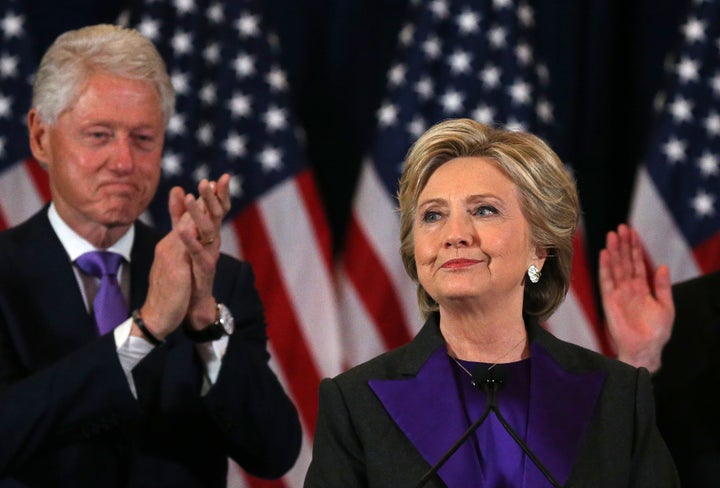
On January 20, what was unthinkable to many just a few weeks ago will become reality: Donald Trump will be inaugurated as the 45th president of the United States. Trump’s victory, which in many ways echoed the Brexit vote, was part of an increasingly global revolt against elites—political, financial, and cultural. It was also a populist rebellion against the economic and social dislocations of a globalization process dominated by the interests of multinational corporations and exacerbated by the rise to preeminence of a neoliberal ideology of deregulation, tax cuts, privatization, reduced social services, free trade, and the unimpeded movement of capital.
From Goldwater to Reagan
But the defeat of Hillary Clinton and the Democrats was also a consequence of a political crisis specific to the United States, one whose roots extend back to 1964, when the long migration of whites to the Republican Party began. As the liberal Lyndon Johnson vied for the presidency against the conservative Barry Goldwater, the New Deal coalition that had dominated American politics since 1932 began to show its first cracks. The cause was the civil rights movement, which aroused fierce opposition among whites in the deep South, leading them to abandon their historic attachment to the Democratic Party and to vote in five states—South Carolina, Georgia, Alabama, Mississippi, and Louisiana—for a Republican Party led by a man who had opposed the Civil Rights Bill in the name of “states’ rights.” Though Johnson defeated Goldwater in a landslide, the “Solid South” was solid for the Democrats no more.
By 1968, with opposition to the civil rights, student, anti-war, and other ‘60s movements mounting, it became apparent that the old and increasingly fragile New Deal coalition of labor, the South, northern blacks, and white liberals was in the process of disintegrating. This time the biggest shift took place in the North, where segments of the Northern working class—many of them white ethnics unsettled by the race riots and student revolts that punctuated the decade—abandoned the Democratic Party for Richard Nixon. The result was Republican victories in Illinois, Ohio, Wisconsin, New Jersey, and Indiana—all Northern states with large working classes. Meanwhile, the movement of the South away from the Democratic Party escalated sharply, with nine of the eleven states of the confederacy voting either for Nixon (four) or the overtly racist George Wallace (five), most famous for his speech defiantly pledging “Segregation today, segregation tomorrow, segregation forever!”
Prior to the 1968 election, a young Nixon aide named Kevin Phillips completed a draft of a brilliant and prescient book entitled The Emerging Republican Majority. In it he argued that 1968 “bespoke the end of the New Deal Democratic hegemony and the rise of a dominant new Republican coalition in rising sections of the country,” notably the “Sun Belt” states of the South and West and in “Middle America” urban-suburban districts. The great political upheaval of the sixties, he argued, was not the progressive and left movements with which the decade is often identified, but “rather a populist revolt of the American masses…against the caste, policies and taxation of the mandarins of Establishment liberalism.”
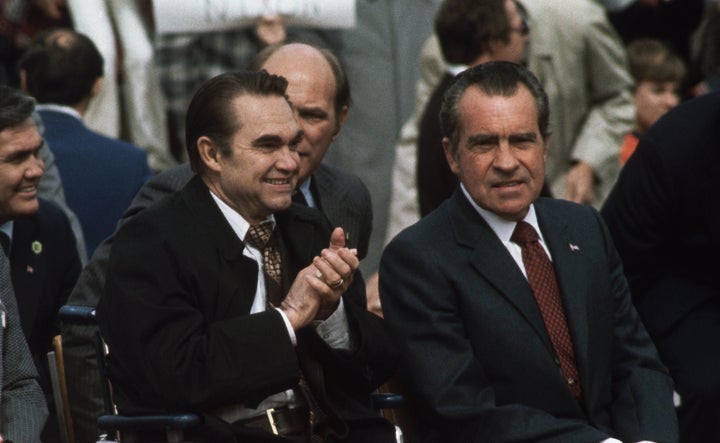
The results of the 1968 election, which Richard Nixon won with 301 electoral votes to 191 for Hubert Humphrey and 46 for George Wallace, seemed to confirm Phillips’ analysis. The Wallace voters, he predicted, would in short order logically migrate to the Republican Party, giving them a clear electoral majority; a “substantial Negro vote,” he pointedly noted, “is not necessary to national Republican victory.”[1] When Nixon was re-elected in a historic landslide in 1972 by a margin of 23 points, Phillips’ case for an emerging Republican majority seemed compelling.
The Watergate scandals temporarily derailed the trend towards a Republican majority, and Jimmy Carter, a centrist born-again Southerner with considerable appeal in the states of the old confederacy, managed to win a close election in 1976. But the realignment already visible in 1968 was resoundingly confirmed in 1980, when Ronald Reagan won a decisive victory—489 electoral votes to 49—over the incumbent Carter. The 1980 election did more than signal an electoral realignment, for it also marked the arrival of a transformational presidency that would fundamentally change the boundaries of both policy and political discourse.
With his simple formula of low taxes, small government, and a strong national defense, Reagan had constructed a resonant alternative to the long-reigning New Deal ideology. To be sure, Reagan’s appeal was not devoid of racial dog whistles; he had, after all, chosen to launch his 1980 presidential campaign in Philadelphia, Mississippi—the very place where three civil rights workers had been brutally murdered just 16 years earlier. In any event, Reagan’s combination of neoliberal economic policy and fierce opposition to Soviet communism proved immensely popular. When in 1984 he decimated Walter Mondale, a Democrat friendly to labor unions and widely perceived as an advocate of “big government,” by a margin of 525 to 13 in the electoral college, the last vestiges of the New Deal coalition had been swept away.
Dilemma for the Democrats
Having lost four of the last five elections, three of them by enormous margins, Democrats faced a genuine dilemma: how were they to regain the White House in the face of a formidable Republican juggernaut? The answer that began to emerge in the wake of Mondale’s defeat came in the form of the Democratic Leadership Council (DLC), a business-friendly movement within the Democratic Party that advocated a “third way” between the right-wing conservatism of Ronald Reagan and the liberalism of the New Deal and its heir, the Great Society. Founded in 1985 and emphasizing market-based, non-bureaucratic solutions to public problems and a hardline approach to foreign policy, the DLC did not offer an alternative to the neoliberalism of Reagan and Thatcher, but implicitly endorsed its central premises. Calling for less regulation of business and reduced reliance on large-scale government programs, the New Democrats advocated reduced welfare benefits, less progressive tax policies, and tough measures to combat crime, including stiffer prison sentences. Receiving a powerful boost from the decisive defeat of Michael Dukakis, a technocratic Northern liberal, by George H W Bush in the 1988 election, the DLC’s brand of soft neoliberalism was soon to become the ideology of the dominant wing of the Democratic Party.
“The Democratic Leadership Council did not offer an alternative to the neoliberalism of Reagan and Thatcher, but implicitly endorsed its central premises.”
Bill Clinton’s ascent to the leadership of the DLC in 1990 and his successful 1992 campaign for the presidency marked a turning point in the transformation of the Democratic Party into the corporate-friendly—and corporate-dependent—entity that was unable to defeat Donald Trump in 2016. Yet there is no denying Clinton’s singular accomplishment: to get elected and then re-elected after Republicans had controlled the White House for 20 of the previous 24 years.
But Clinton’s personal electoral success came at a price. In 1994, the Democrats lost control of both Houses of Congress for the first time in decades, and Clinton chose to embark on a policy of “triangulation” between the Republicans and the Congressional Democrats that moved the Party to the right and alienated the activist base of the party. As part of this strategy of triangulation, Clinton sponsored and signed crime and welfare bills that, as Michelle Alexander documented, had disastrous effects on black America.
As befit a New Democrat, Clinton in 1993 expended enormous political capital to gain passage of the North American Free Trade Agreement (NAFTA) against fierce opposition within the Democratic Party. He also reneged on a major campaign pledge that linked removal of China’s “most favored nation” status as a trading partner to improvement in its record on human rights. In his second term, President Clinton signed the Financial Services Modernization Act, a measure that repealed the Glass-Steagall Act which separated commercial and investment banking and which furthered the deregulation of Wall Street—legislation that many analysts believe contributed to the financial meltdown of 2008. And in 2000, after having successfully lobbied for China’s entry into the World Trade Organization, he convinced Congress to establish permanent normal trading relations with China—an act that contributed to the loss of as many as 2.4 million manufacturing jobs in the United States. Far from repudiating the neoliberal economic policies initiated by Ronald Reagan, the Clinton presidency extended them into new domains.
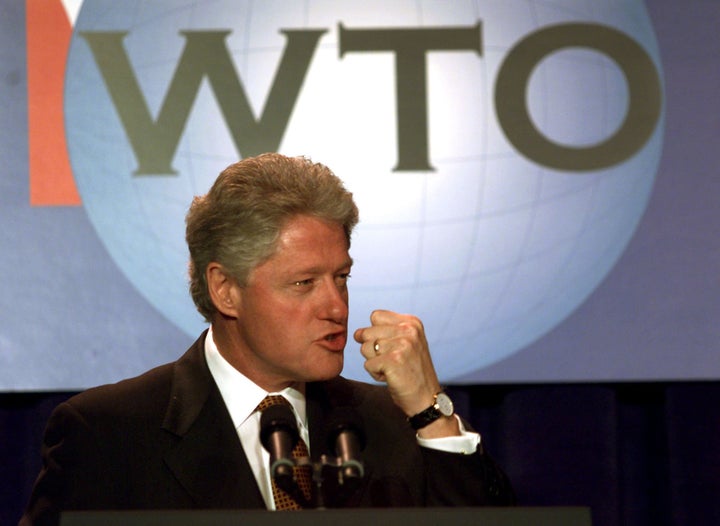
Obama’s Thwarted Aspirations
Then, after an eight-year period of Republican rule under George W. Bush, who left office with one of the lowest approval ratings in modern history, Barack Obama won the White House in 2008 with the enthusiastic support of a multiracial coalition demanding fundamental—albeit not clearly defined—“change.” In an interview with the editorial board of the Reno Gazette-Journal ten months before he was elected, then-candidate Obama observed that “Ronald Reagan changed the trajectory of America in a way that Richard Nixon did not, that Bill Clinton did not,” adding that Reagan “put us on a fundamentally different path.” The message was clear: unlike Hillary Clinton, his foe in the battle for the Democratic nomination, Obama aspired to be a genuinely transformational president.
Eight years on, we can see that the Obama presidency proved neither transformational nor realigning. Coming into office in the midst of the gravest economic crisis since the Great Depression, his first task was to avoid a total collapse. In confronting this task, Obama departed from one key neoliberal orthodoxy, rejecting austerity and sponsoring a $800 billion stimulus package that helped avert a second Great Depression. But in other regards, he followed neoliberal dogma: studiously avoiding any policies that might undermine “business confidence” and attending solicitously to the needs of capital, including the powerful financial institutions responsible for the crisis.
Thanks to WikiLeaks, we now know that Obama was seeking and following the advice of Wall Street even before he was elected; in a remarkable email dated October 6, 2008, Michael Fromer, an executive at Citigroup, wrote John Podesta, co-chair of Obama’s transition team (and in 2016 the chairman of Hillary Clinton’s presidential campaign), with a list of candidates for 31 cabinet-level positions as “recommended by various sources for senior level jobs.” The list bore a striking resemblance to the names that ended up in the cabinet, including Eric Holder (Attorney General), Robert Gates (Defense), Rahm Emmanuel (Chief of Staff), and Peter Orszag (Office of Management and Budget). For Treasury, the list had only three names: Timothy Geithner, Larry Summers, and Robert Rubin. In the end, Geithner became Secretary of Treasury, Summers Director of the National Economic Council, and Rubin a trusted informal advisor.
“Eight years on, we can see that the Obama presidency proved neither transformational nor realigning.”
Taking his cues from Wall Street, Obama advocated a policy notably friendly to the nation’s deeply unpopular major financial institutions: a gigantic taxpayer-funded bailout and a decision not to prosecute a single Wall Street executive for any transgressions committed in the lead-up to the crisis. At the same time, the Obama administration did little for the many millions of people who lost their homes and pensions as a result of the crash. In response, growing public outrage at the gentle treatment of Wall Street and the conspicuous lack of assistance offered to its victims, coupled with the rise of the Tea Party and the emergence of fierce opposition to the Affordable Care Act (Obamacare), the Democrats suffered a massive defeat in the mid-term elections, losing 64 seats in the House of Representatives and 10 seats in the Senate.
In the 2012 presidential election, Obama again succeeded in cobbling together a coalition that, like Bill Clinton’s, was just strong enough to win him re-election, though this time by a margin of under 4 percent. But Democrats again suffered serious setbacks in the mid-term election of 2014, losing 13 seats in the House and 7 in the Senate. Having been swept into office in 2008 with the largest Democratic majority in the House and Senate since 1964, Obama had by 2014 managed to lose control of both Houses of Congress by considerable margins.
Signs of Popular Anger
This was the political landscape when Hillary Clinton announced her candidacy for president in April 2015. The warning signs should have been evident: the Democrats had been roundly rejected in the two most recent mid-term elections, the economic recovery was still sluggish, and the emergence of the Tea Party on the right and Occupy Wall Street and other insurgent movements on the left seemed to suggest roiling popular discontent. Into this atmosphere of widespread dissatisfaction with the direction of the country stepped the former Secretary of State, Senator from New York, and First Lady—the very embodiment of the status quo at a moment of clamorous demand for change.
The primary process in the Republican and Democratic parties quickly revealed seething populist anger against the Establishment on both the right and the left. But the response of party elites to popular insurgencies was very different; while the Republican Establishment, which despised Trump, proved unable to unify behind an alternative candidate and deny him the nomination, the Democratic Party establishment, deploying the ostensibly neutral Democratic National Committee and systematically enlisting major donors as well as its numerous allies in the media, succeeded in quashing a surprisingly strong left insurgency from Bernie Sanders. Nevertheless, the 74-year-old Sanders—a professed democratic socialist calling for a “political revolution”—won 22 states and 43 percent of the primary vote.

For those who cared to look, by January 2016—even before a single primary vote had been cast—troubling signs about Clinton’s presidential prospects were everywhere visible: a majority of voters viewed her unfavorably, a far stronger majority viewed her as not “honest or trustworthy,” and a narrow majority viewed her as not caring “about the needs and problems of people like you”—the latter finding almost unprecedented among Democratic candidates.[2] Equally troubling, Clinton polled poorly on each of these items with independents, a group whose votes would be critical in the November election.
Under ordinary circumstances, numbers like these would have been fatal for someone seeking a party’s presidential nomination. But the Democratic Party elite—its donors, its operatives, and the elected officials who comprise the “super-delegates”—had long since decided it was Hillary Clinton’s rightful turn. So, too, had President Obama, who quietly discouraged a possible Joe Biden candidacy and subtly placed his thumb on the scale on behalf of Hillary Clinton during her bitter and protracted primary battle with Sanders. What happened on November 8 cannot be understood apart from the decision of the Party Establishment to stick with Hillary in a year of mounting populist anger.
‘Any sense of her core message?’
The Clinton campaign was delighted to find Donald Trump as the sole remaining obstacle to the White House—he had, after all, said numerous outrageously racist, xenophobic, and misogynistic things during the primaries, and his erratic behavior had, their extensive focus-groups assured them, convinced the public that he was “temperamentally unfit” to be president. Meanwhile, the Clinton campaign—unlike the Trump and Sanders campaigns—struggled to find a message, testing 85 different slogans and finally settling on the insipid “Stronger Together.” So devoid of content was the campaign that a plaintive Joel Benenson, Clinton’s chief pollster, was reduced to emailing campaign chairman John Podesta in February of this year: “Do we have any sense from her what she believes or wants her core message to be?”
Though Clinton for years had her eyes on the presidency, coming painfully close in 2008, her behavior in the two years after her term as Secretary of State ended in January 2013 needlessly put at risk her chances as well as those of the Democratic Party. In less than 24 months between 2013 and the beginning of 2015, Hillary Clinton was paid $21.7 million for delivering 92 speeches—this was in addition to the $104.9 million that Bill Clinton had received for 542 speeches given since he left office in January 2001.[3] The great majority of these speeches were to audiences at some of America’s largest private corporations, and some of them—the three speeches to Goldman Sachs at $225,000 per appearance are simply the best known—were delivered at the very Wall Street firms implicated in the economic collapse of 2008.
Not all of Clinton’s speeches, however, were to private corporations; one prominent example of a speech to a non-profit institution was at the financially strapped University of California at Los Angeles in March 2014. Clinton’s fee for her speech at UCLA was $300,000; when officials there requested a reduced rate for public universities, they were told by Clinton’s representatives that $300,000 was the “special university rate.”
“The Clinton campaign—unlike the Trump and Sanders campaigns—struggled to find a message.”
In the presidential campaign of 2012, Barack Obama portrayed Mitt Romney as a heartless plutocrat who outsourced the jobs of American workers, and this appeal helped him win enough support in the white working class to carry Pennsylvania, Wisconsin, Ohio, and Michigan. Donald Trump, a multi-billionaire who has a long record of exploiting undocumented workers and stiffing small contractors, was a ripe candidate for similar attacks. But Hillary Clinton, who had collected gigantic fees from corporate America and whose campaign was being heavily funded by Wall Street, was not the right candidate to make such charges stick.[4] No small part of her campaign’s ultimate failure was rooted in her inability to plausibly launch this line of attack.[5]
Perhaps realizing that she was ill-suited to make a populist appeal to those left behind by globalization and de-industrialization, the Clinton campaign instead embarked on an identity-based strategy of reassembling the Obama coalition. The main target groups of this strategy were African-Americans, Latinos, Asian-Americans, millennials, and white women. But this strategy was no substitute for a clear message. In the end, the decidedly uncharismatic Clinton was unable to fully reassemble the Obama coalition, winning by strong majorities but smaller margins in virtually every group compared to Obama v. Romney in 2012: African-Americans (88-8 v. 93-6), Latinos (65-29 v. 71-27), Asian-Americans (65-29 v. 71-27), and millennials (55-37 v. 60-37).
The one exception was women, and even here—despite concerted targeting and Donald Trump’s numerous egregiously sexist remarks and several highly-publicized accusations of sexual assault—the gain was a mere one point (54-42 v. 55-44). Women, who comprise 52 percent of the electorate, simply did not vote the way the Clinton campaign had projected. Though the gender gap was real, women voted more on the basis of race and class, with white women favoring Trump 53 to 43 and white women without college degrees voting for Trump by a stunning margin of 67 to 28. Even among white women with college degrees, thought by the campaign to be a key Clinton constituency, Trump lost by just 45 to 51.
The Clinton campaign’s single-minded emphasis on diversity over social class was evident in a memo on the choice of vice president released by Wikileaks. In a March 17 email, Clinton campaign chair John Podesta wrote that he had “organized names into rough food groups,” beginning with Latinos, then women (all white), then African-Americans (all male). Also listed were white men (the group from which Tim Kaine was ultimately selected) and token groups of military and business leaders. But group mobilization often produces group counter-mobilization, a point emphasized by Thomas Edsall, who observed that “Clinton’s efforts to appeal to individual demographic groups fueled the retaliatory backlash that Trump capitalized on to make incremental but decisive gains.”
Nevertheless, at the national level, Clinton’s strategy of assembling a diversity-based coalition worked reasonably well; she did, after all, win the popular vote by a margin of more than 2.8 million. But American elections are decided by the electoral college, and this requires winning enough states to garner 270 electoral votes. This is where Clinton’s strategy failed, and the place where it did so is clear: the industrial states of the “rust belt.”
The first step toward understanding why Trump won Ohio, Wisconsin, Pennsylvania, and Michigan is to acknowledge that he had a clear and resonant message. Departing from Republican orthodoxy, Trump relentlessly attacked “free trade” deals such as NAFTA and TPP, the failure to secure the border and the presence in America of millions of undocumented (or, as he preferred to call them, “illegal”) immigrants, and U.S. involvement in unnecessary wars like Iraq and Libya. Trump’s slogan “Make America Great Again,” his emphasis on “America First” (despite its unfortunate historical associations), and his repeated references to “forgotten Americans” were tailor-made to appeal to the white working-class populations of the upper Midwest. Sixty-four electoral votes were at stake, and it was here that he won the election.
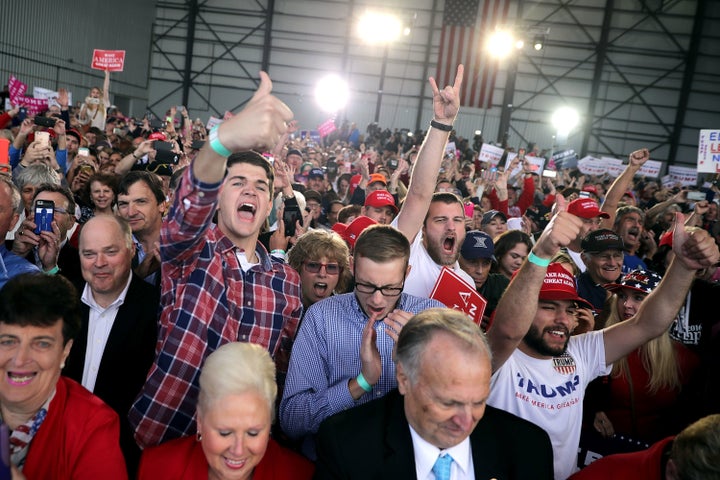
The White Working-Class Revolts
Many analysts have blamed Clinton’s loss on the pervasive presence of racism and xenophobia in the white working class, and there is no shortage of survey evidence showing that Trump supporters were more likely to exhibit racist and xenophobic attitudes than those who voted for other candidates.[6] But it is also worth remembering that an African-American named Barack Hussein Obama was victorious in Pennsylvania, Ohio, Wisconsin, and Michigan in both 2008 and 2012, often by comfortable margins; indeed, many of the white working-class counties critical to Trump’s victory had twice voted heavily for Obama. Interestingly, even African-Americans were not immune to the 2016 trend towards Trump in these rust belt states, with the Democratic margins among blacks declining modestly in each of them.[7]
But the main force behind Trump’s victory in these four critical industrial states was undeniably the white working class. In each of these states, white non-college educated men voted overwhelmingly for Trump: 71-26 in Pennsylvania, 70-26 in Ohio, 69-26 in Wisconsin, 68-24 in Michigan. And non-college educated white women, too, voted heavily for Trump, though not quite as decisively as men: 58-38 in Pennsylvania, 55-41 in Ohio, 56-40 in Wisconsin, and 57-38 in Michigan. This was a genuine working-class revolt.
In an eerily prescient article written in July of this year, the filmmaker Michael Moore, himself a native of Flint, Michigan, predicted that Trump would win the election by focusing on “the four states of the rust belt of the upper Great Lakes—Michigan, Ohio, Pennsylvania, and Wisconsin.” “From Green Bay to Pittsburgh,” he wrote, “this, my friends, is the middle of England, broken, depressed, struggling, the smokestacks strewn across the countryside with the carcass of what we used to call the middle class.” “Angry, embittered working (and nonworking) people… [feel] abandoned by the Democrats.” In truth, Hillary Clinton made little effort to speak to these people, not visiting Wisconsin even once during the campaign while making a futile trip to Arizona in search of Latino voters who failed in the end to tip this traditionally Republican state to the Democrats. Meanwhile, the objective circumstances of the working class continue to deteriorate; between 1975 and 2014, the median incomes of white male workers without a college degree declined by more than 20 percent (after adjusting for inflation), with a drop of 14 percent in the seven years between 2007 and 2014.
Contempt for Trump Supporters
But the Democrats’ problem with the white working class goes well beyond its failure to enact policies that protect its economic interests. For there is a powerful cultural dimension to the flight of less educated whites from the Democratic Party that is rooted in a feeling—not without justification—that many of its leading elements look down on them. This elemental feeling that they are not viewed by Democratic elites with dignity and respect was amply confirmed by Hillary Clinton’s now-famous remarks at a gala LGBT fundraiser in New York City. In it, she said that “you could put half of Trump’s supporters into what I call the basket of deplorables. Right? The racist, sexist, homophobic, xenophobic, Islamaphobic―you name it,” adding that some of them are “irredeemable.” These comments–and the laughter from the well-heeled audience–confirmed to Trump supporters that many Democrats hold them in contempt. According to Diane Hessan, whose special assignment for the Clinton campaign was to interview 250 undecided voters and to stay in touch with them over the course of the campaign, this was the moment—more than FBI Director James Comey’s remarks, more than the emails, and more than Bill Clinton’s visit with Attorney General Loretta Lynch on the tarmac—when undecided voters shifted to Trump.
“Hillary Clinton made little effort to speak to these people, not visiting Wisconsin even once during the campaign while making a futile trip to Arizona in search of Latino voters”
Having since the 1980s joined rather than resisted the move toward neoliberalism and having adopted a pro-corporate stance, the Democratic Party now finds itself in a crisis that is simultaneously political, economic, and cultural. After the electoral debacle of 2016, the Party is in a profoundly weakened state, with Republicans controlling not only the presidency, the House of Representatives, the Senate and (soon) the Supreme Court, but also 31 of 50 governorships, 35 state senates, and 32 state assemblies. The Democratic Party must now face the discomfiting reality that Obama’s two victories veiled serious underlying weaknesses; since his sweeping victory in 2008, Democrats have lost 64 seats in the House and 11 in the Senate.
But political trends in the United States can reverse themselves with astonishing rapidity; Johnson’s 23-point victory over Goldwater in 1964 was followed by Nixon’s victory in 1968, and Nixon’s 23-point victory over McGovern was followed by Carter’s victory in 1976. Though the shock of defeat is still fresh, there are early signs that the progressive wing of the Democratic Party may be gaining strength. In the battle over leadership of the Democratic National Committee, a leading candidate is Keith Ellison of Minnesota, co-chair of the Progressive Caucus in the House of Representatives and an African-American Muslim. And it is already clear that Elizabeth Warren and Bernie Sanders will be among the democratic party’s most influential figures.
In the United States and abroad, 2016 was a year of populist revolt. As John Judis noted in an incisive new book, The Populist Explosion, populist movements are an early warning system of real problems that the major parties have downplayed or ignored.[8] But left-wing and right-wing populism are fundamentally different. Left-wing populism is dyadic and champions “the people against an elite or establishment”; right-wing populism is triadic and champions “the people against an elite that they accuse of coddling a third group, which can consist for example, of immigrants, Islamists, or African-American militants.” In 2016, Trump’s right-wing populism was triumphant, first in the Republican primaries and then in the general election. But unlike many European countries, there was a politically viable left-wing alternative in the form of the candidacy of Bernie Sanders. And had Sanders been nominated, he might well have won. Though there is no way of knowing how a Sanders v. Trump election would have played out, a nationally representative poll of 1638 registered voters taken just days before the election showed Sanders beating Trump by 12 points, 56 to 44.[9]
At Clinton’s rallies in the closing days of a campaign notably lacking in inspiration, the speakers would often blare with the sounds of Andra Day’s stirring pop anthem, “Rise Up.” The 2016 election did witness an uprising, but it was not the one that the Clinton campaign had anticipated. What Democrats now need to ponder is whether the uprising in their own party might, in this year of the outsider, have been the best path to keep Donald Trump out of the White House.
***
[1] Kevin P Phillips. The Emerging Republican Majority, New Rochelle, NY, Arlington House, 1969
[2] Jerome Karabel, “Is Hillary Clinton More Electable Than Bernie Sanders?”, The Huffington Post, January 26, 2016. See also Glenn Greenwald, “With Donald Trump Looming, Should Dems Take a Huge Electability Gamble by Nominating Hillary Clinton?,” The Intercept, February 24, 2016
[3] Tyler Durden, “The Complete Breakdown Of Every Hillary and Bill Clinton Speech, And Fee, Since 2013,” Zero Hedge, August 3, 2015; Philip Rucker, Tom Hamburger, and Alexander Becker, “How the Clintons Went From ‘Dead Broke” To Rich: Bill Earned $104.9 Million For Speeches,” The Washington Post, June 26, 2014
[4] John Carney and Anupreeta Das. “Hedge Fund Money Has Vastly Favored Clinton Over Trump,” The Wall Street Journal, July 29, 2016; Ben Norton, “Hillary Clinton Is Wall Street’s Preferred Candidate: Financial Execs Pouring Millions Into Her Campaign To Defeat Trump,” Salon, May 9, 2016
[5] According to a poll conducted by the AFL-CIO, Obama won union voters my a margin of 32 points over Romney (65-33) in 2012; in contrast, Clinton’s victory over Trump among union voters in 2016 was just 19 points (56-37). This loss of support among working-class voters was crucial in permitting Trump to breach the Democrats’ “blue wall” in the industrial states of the Midwest.
[6]Dylan Matthews, “Taking Trump Voters’ Concerns Seriously Means Listening To What They’re Actually Saying,” Vox, October 15, 2016; Zack Beauchamp, “These 2 Charts Explain How Racism Helped Fuel Trump’s Victory,” Vox, 11/10/16
[7] This conclusion is based on my analysis of CNN state exit polls in 2012 and 2016.
[8] John Judis. The Populist Explosion, New York, Columbia Global Report 2016
[9] Ryan Grim and Daniel Marans, “New Pre-Election Poll Suggests Bernie Sanders Could Have Trounced Donald Trump,” The Huffington Post, November 11, 2016. Sanders skeptics are correct when they argue that he would undoubtedly have faced fierce attacks from the Trump campaign; the question is how well he would have withstood them. For a sample of some of what was in the Republican opposition research file on Sanders, see Kurt Eichenwald, “The Myths Democrats Swallowed That Cost Them the Presidential Election,” Newsweek, November 14, 2016

